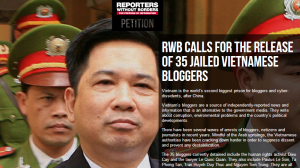2014 was the wake-up year for Japan, the Philippines and Vietnam that they had to confront China’s drive to gain full legal and strategic control of the South China Sea, one of the world’s great trade arteries.
“Tensions are rising. In August a Chinese Navy fighter plane buzzed a U.S. Navy P-8 Poseidon, narrowly missing it. Two months earlier [in June], an armed Chinese vessel chased and sank a Vietnamese fishing boat. China is also at loggerheads with Japan and the Philippines, which the U.S. is obligated under treaty to defend,” National Geographic magazine reported on December 11.
Charles W. Freeman Jr., co-chairman of the U.S. China Policy Foundation and a leading U.S. expert on East Asia, told the Asia Pacific Defense Forum [APDF] that the very economic success of the northeast Asian nations, combined with the lack of any effective self-regulating structures to safeguard security, created a dangerously combustible and unstable dynamic in the region.
“These days, people who talk about the Indo-Pacific region – the arc of Asia from Japan through China to Pakistan – always begin by noting that it’s becoming the world’s center of economic gravity. That’s true. The region’s economy is now half again as large as America’s or Europe’s. In purchasing power terms it’s twice as big. It accounts for nearly half the world’s manufacturing. It is growing faster than anywhere else,” he said.
However, because of this success, “The Indo-Pacific region has become too big and dynamic to be regulated by outside powers. Sadly, however, it is not effectively regulating itself. The status quo is unsustainable. As balances of power within the region evolve, the risk of war by inadvertence is rising,” Freeman warned.
China set to enforce 10-dash map
2014 was the year China made clear it was determined to enforce its sovereignty over 90 percent of the South China Sea, as defined by its unilateral 10-dash line.
In April, Chinese Premier Li Keqiang told the Boao Forum for Asia hosted by China on Hainan Island that Beijing will respond firmly to provocations that undermine peace and stability in the South China Sea.
In May, China towed its gigantic Hai Yang Shi 981 [HYSY981] deep sea oil rig to a location near the Paracel or Xisha Islands in the South China Sea, underlining its claim to sovereignty in the area and outraging Vietnam, which has conflicting claims.
In June, a Chinese patrol vessel chased and sank a Vietnamese fishing boat in the area.
In August, came the near collision between the People’s Liberation Army Navy [PLAN] combat fighter and the U.S. reconnaissance P-8 Poseidon aircraft in international air space.
During the same period, Beijing launched a gigantic construction program to extend tiny islets and coral reefs it claims in the South China Sea into significant ports and air fields that it can use to buttress its legal claims to sovereignty and to project naval and air force power in the area.
The year ended with Beijing making clear it continued to reject efforts by the Philippines and other nations to arbitrate their dispute through mutually agreed international legal proceedings.
However, these activist policies generated strategic reactions from other major nations in the region.
New leaders take hardline approach
In May, nationalist Bharatiya Janata Party [BJP] leader Narendra Modi won a landslide election in India. He then pursued unprecedented expanded defense cooperation programs with Japan and Vietnam.
In Indonesia, populist candidate Joko Widodo won the presidency by a hairsbreadth and took office in October. He then embraced the Armed Forces of Indonesia [TNI]’s plans for a major change in strategic direction, focusing on defending Indonesia’s territorial integrity and maritime security. This new policy indicated Jakarta would resist China’s claims to Indonesia’s Natuna Islands and their oil-rich environment.
Alarmed by China’s encroachments into maritime regions claimed by Hanoi, Vietnam abandoned its tradition of proud isolation. It drew closer to the Philippines, Japan and India and sought new ties with the United States.
In December, Japanese Prime Minister Shinzo Abe won a landslide reelection victory, one of the greatest in modern history: it gave his ruling Liberal Democratic Party-Komeito alliance control of three quarters of the Diet, the main house of the Japanese parliament. The victory gave Abe the mandate he sought to revise Japan’s constitution, expand the country’s Air and Sea Defense Forces and expand arms and warship sales to its neighbors.
China rejects South China Sea arbitration
At the end of the year, China’s refusal to accept the Permanent Court of Arbitration [PCA] process to resolve its territorial disputes in the South China Sea with Philippines set a worrying direction for 2015, the Straits Times newspaper in Singapore warned in an editorial on December 23.
“China’s rejection of the international process represented by the Permanent Court of Arbitration at The Hague is both a missed opportunity and a disappointing corollary to its intransigence on the South China Sea dispute,” the newspaper said.
Other experts issued similar warnings.
“Recent developments in the South China Sea, including the dispatch of a Chinese oil rig in the Paracels and the various construction work ongoing in the Spratleys, point to an uneven commitment to the status quo – or lack thereof – by some, if not all parties,” Vietnamese analysts Truong-Minh Vu and Trang Pham, lecturers in the Faculty of International Relations, University of Social Sciences and Humanities in Ho Chi Minh City, wrote in The Diplomat on December 22.
“Without an agreed baseline, any negotiation is resting on fragile grounds. ASEAN and China have been engaged in substantial talks since the conclusion of the 2002 Declaration of Conduct [DoC], but the prospects of these negotiations leading to a much-awaited Code of Conduct [to resolve the South China Sea territorial disputes] seem remote,” they wrote.
“The lack of normative order in the South China Sea will pave the way for legal and academic fireworks in 2015,” Vu and Pham warned.
In rejecting any international or supranational legal arbitration, “China is merely offering another version of the argument that the South China Sea is its [own], because it says so,” the Straits Times agreed.
“This is not a tenable situation,” the newspaper warned.
Yet China’s hard line on the South China Sea has proven to be self-defeating, Asia Times Online reported December 12.
China’s conflicts with its neighbors and its burden of maintaining control within its 10-dash map are key areas of strategic and diplomatic vulnerability, it concluded.
All this was China’s own doing, East Asia security analyst and author Gordon G. Chang told APDF.
“How do you spend a trillion dollars, irritate your neighbors and end up less secure? Ask Beijing,” he said.
Height Insoles: Hi, I do believe this is an excellent site. I stumbledupon …
http://fishinglovers.net: Appreciate you sharing, great post.Thanks Again. Keep writi…
Achilles Pain causes: Every weekend i used to pay a quick visit this site, as i w…






January 12, 2015
2014: the year China alarmed its neighbors into new defense strategies
by Nhan Quyen • [Human Rights]